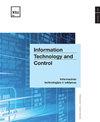Optimal Trained Deep Learning Model for Breast Cancer Segmentation and Classification
IF 2
4区 计算机科学
Q3 AUTOMATION & CONTROL SYSTEMS
引用次数: 0
Abstract
Breast cancer is the most widespread cancer among women. Based on the International cancer research center analysis, the highest number of deaths among women is due to breast cancer. Hence, detecting breast cancer at the earliest may help the oncologist to make appropriate decisions. Due to variations in breast tissue density, there is still a challenge in precise diagnosis and classification. To overcome this challenge, a novel OTDEM-based breast cancer segmentation and classification is proposed with the following four stages: they are, preprocessing, segmentation, feature extraction and classification. The input image is passed to the initial stage using the CLAHE filter to enhance the image. Then the preprocessed image is given to the segmentation stage for the image sub-segments by correlation-based deep joint segmentation. Following that, the features such as statistical features, improved LGXP, texton features, and shape-based features are derived from the segmented image. Then the derived features are fed to the ensemble model that includes CNN, DBN, and BI-GRU classifier to finalize the classification outcome. Further, to enhance the performance of the ensemble model, the weight of BI-GRU is optimized via a new algorithm termed SIPOA. This ensures optimal training to make the model more appropriate in its classification process. Finally, the performance of the proposed work is validated over the traditional models concerning different performance measures.用于乳腺癌分割和分类的最佳训练深度学习模型
乳腺癌是女性中最常见的癌症。根据国际癌症研究中心的分析,死于乳腺癌的女性人数最多。因此,尽早发现乳腺癌有助于肿瘤学家做出适当的决定。由于乳腺组织密度的差异,精确诊断和分类仍是一项挑战。为了克服这一挑战,我们提出了一种基于 OTDEM 的新型乳腺癌分割和分类方法,包括以下四个阶段:预处理、分割、特征提取和分类。输入图像在初始阶段使用 CLAHE 滤波器增强图像。然后,将预处理后的图像交给分割阶段,通过基于相关性的深度联合分割进行图像子分割。然后,从分割后的图像中提取统计特征、改进的 LGXP、文本特征和基于形状的特征。然后,将得出的特征输入到包括 CNN、DBN 和 BI-GRU 分类器在内的集合模型中,最终得出分类结果。此外,为了提高集合模型的性能,BI-GRU 的权重通过一种称为 SIPOA 的新算法进行了优化。这确保了最佳训练,使模型在分类过程中更加合适。最后,在不同的性能指标方面,对所提出的工作性能与传统模型进行了验证。
本文章由计算机程序翻译,如有差异,请以英文原文为准。
求助全文
约1分钟内获得全文
求助全文
来源期刊

Information Technology and Control
工程技术-计算机:人工智能
CiteScore
2.70
自引率
9.10%
发文量
36
审稿时长
12 months
期刊介绍:
Periodical journal covers a wide field of computer science and control systems related problems including:
-Software and hardware engineering;
-Management systems engineering;
-Information systems and databases;
-Embedded systems;
-Physical systems modelling and application;
-Computer networks and cloud computing;
-Data visualization;
-Human-computer interface;
-Computer graphics, visual analytics, and multimedia systems.
 求助内容:
求助内容: 应助结果提醒方式:
应助结果提醒方式:


